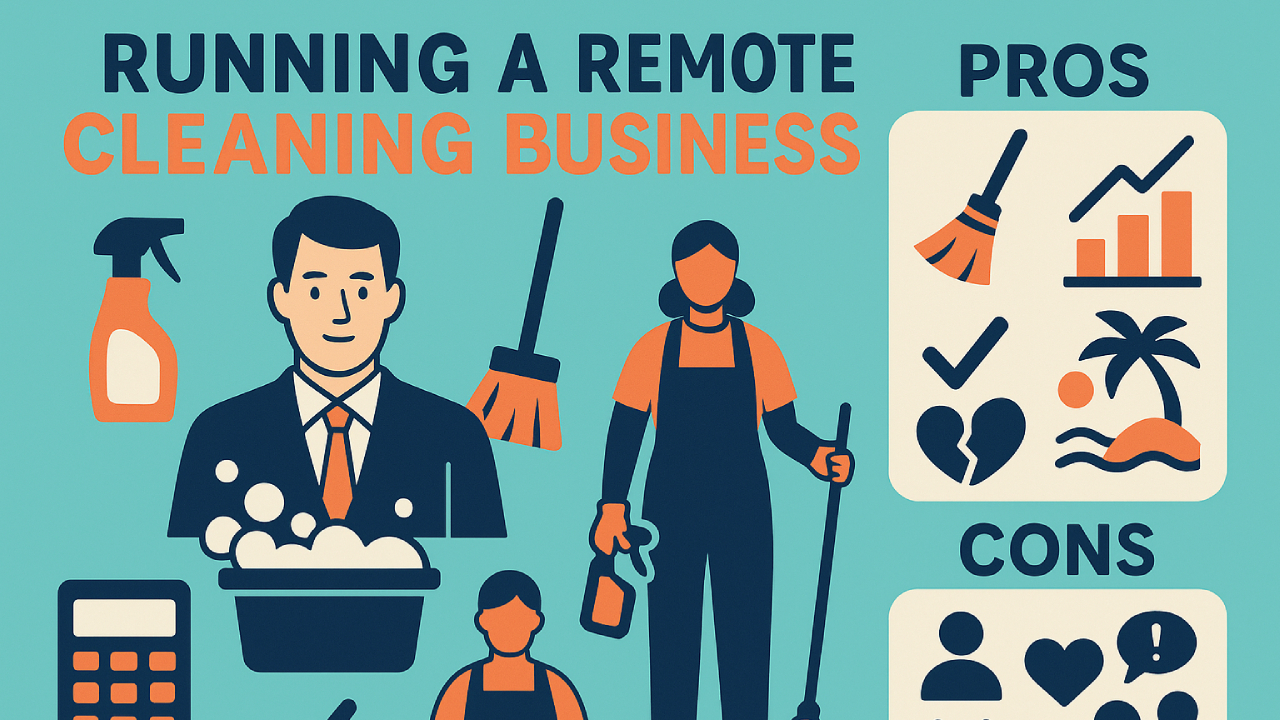How To Start A Remote Cleaning Business!
You don’t need to scrub a single toilet to build a six-figure cleaning business. In fact, with the right approach, you can run it from anywhere and never touch a mop. This remote cleaning business model lets you focus on growth while subcontractors handle the cleaning. Whether you’re new or experienced, this is a powerful path to freedom and profit.
What Is a Remote Cleaning Business?
A remote cleaning business means you own the company but hire others to do the actual cleaning. You run everything behind the scenes—scheduling, quoting, marketing, client relations—while your team handles the physical work. With the right systems, you can even launch this model from day one.
If you’re just starting out and don’t mind cleaning yourself for a bit, that’s okay too. Plenty of solo cleaners earn six figures working part-time. But the remote model offers scalability and long-term freedom.
Perks of the Remote Model
- No cleaning required – Great if you hate cleaning or simply want to manage instead of mop
- Scalable income – Your income isn’t tied to your personal labor
- True freedom – Set your own hours, work from anywhere, and build a business that runs without you
Even solo cleaners can experience some of this, but hiring a team takes it to another level.
Real Challenges to Be Aware Of
- Hiring is the hardest part – Good clients are easy to find. Good workers? Not so much
- No one will care like you do – Perfectionists may struggle with delegation
- More people = more variables – But smart training and systems reduce problems fast
The Two Big Mistakes to Avoid
1. Charging too little
New cleaning business owners often underprice themselves. Cleaning is undervalued, so it’s tempting to go low—but this hurts you.
Low pricing leads to:
- Attracting clients who care only about cost, not quality
- Struggling to hire or keep quality subcontractors
- No real profit—and eventual burnout
Price yourself for value, not for volume. Value-driven clients will pay more and stay longer.
2. Hiring the wrong cleaners
Many people recommend subcontracting to other struggling cleaning business owners. That can work—but it comes with risk.
Instead, look for people who:
- Don’t want to run their own business
- Just want reliable, good-paying work
- Are loyal and consistent, not entrepreneurial
These folks stick with you longer and don’t try to poach your clients.
Build a Profile for Your Ideal Subcontractor
Just like you’d define your dream client, create a profile for the kind of cleaner you want on your team. Interview them over video if needed. Look for good attitude and reliability—not just skill.
My Favorite Type of Client for This Model
I’ve worked with every major client type: residential, commercial, vacation rental, and construction. For remote business owners, commercial cleaning is my top pick—and here’s why:
- Consistency – It’s usually the same job every day
- Higher lifetime value – Long-term contracts and reliable billing
- Low client-sub contact – Jobs happen after-hours, so there’s less risk of client poaching
- Less volume, more revenue – You can earn more with fewer clients
Residential can still work great, but it takes more effort to match the scale of commercial contracts.
Final Thought: Learn to Bid and Build Your Team
Even if you never plan to clean, someone on your team needs to know how to bid properly. That means quoting accurately, factoring in labor costs, and leaving room for real profit.







